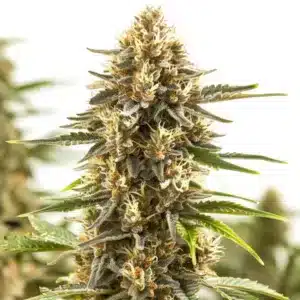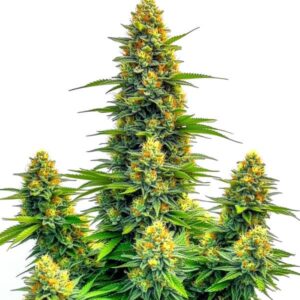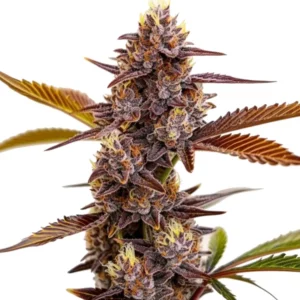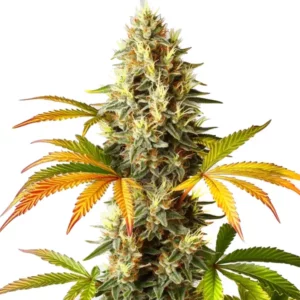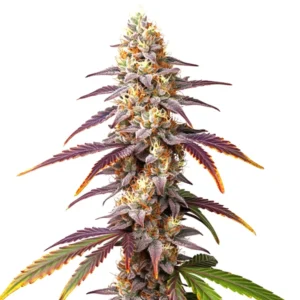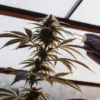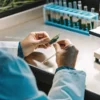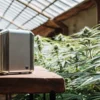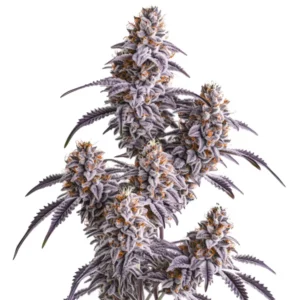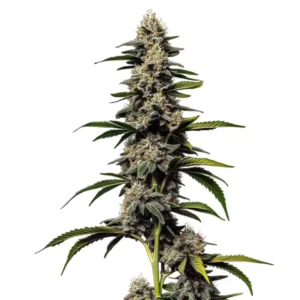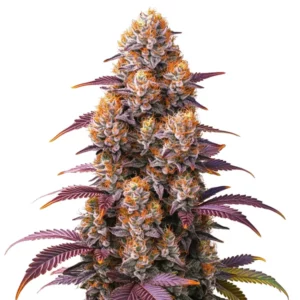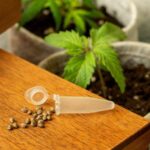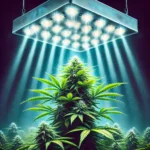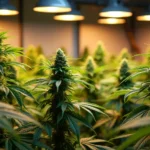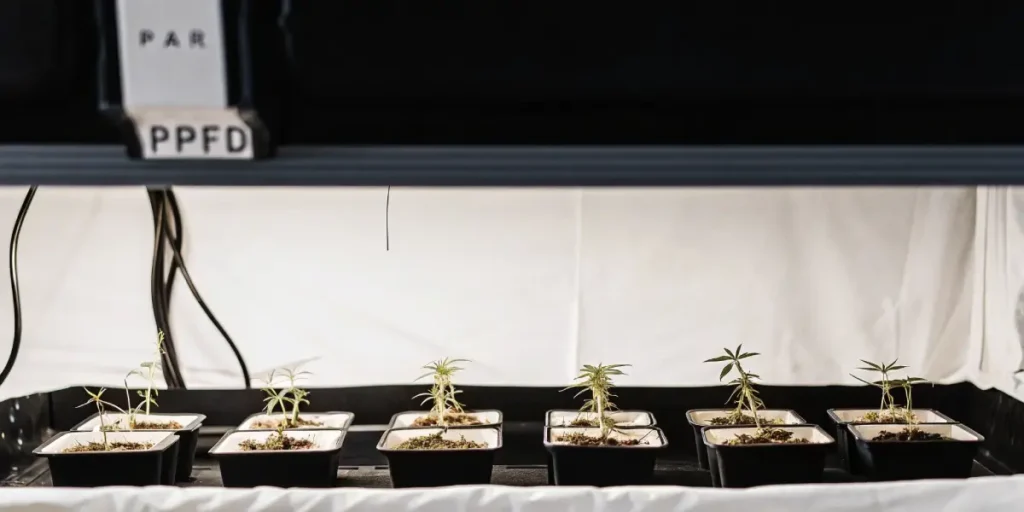
PPFD for Clones: Achieving Optimal Light for Healthier Growth
PPFD and Its Role in Cloning
What is PPFD and Why is it Important for Clones?
PPFD, or Photosynthetic Photon Flux Density, is the measurement of light photons that reach your cannabis clones per second in a square meter. This isn’t just any light; it’s the light that powers photosynthesis, which is key to the growth and resilience of clones. When you want to ensure your clones thrive from the very beginning, dialing in the right PPFD is essential. Every cannabis grower knows that while light type and spectrum matter, the amount of effective light delivered to your plants determines growth quality and success.
Cannabis clones are fragile, needing the right balance of light to encourage rooting without overwhelming them. This is where PPFD for rooting clones and PAR for clones become crucial. When set correctly, the right Photosynthetic Photon Flux Density and Photosynthetically Active Radiation for clones support rooting and encourage strong stem and leaf formation without stress. For growers looking to perfect their cloning process, understanding the correct PPFD and PAR levels is the first step toward cultivating robust, vibrant clones.
Recommended Strains
Pineapple Kush Regular
|
|
THC | 16% - 19% (Medium) |
|
|
Type | Regular |
|
|
Yield | Medium |
|
|
Phenotype | 60% Indica / 40% Sativa |
Pineapple Autoflower
|
|
THC | 12% - 15% (Low) |
|
|
Type | Autoflowering |
|
|
Yield | High |
|
|
Phenotype | 55% Indica / 45% Sativa |
Ideal PPFD Levels for Healthy Cannabis Clones
Setting the ideal PPFD for rooting clones depends on the specific needs of your cannabis strain and the growth stage of the clone. Generally, cannabis clones thrive with a PPFD range between 100-200 µmol/m²/s. This range is low enough to prevent stress but sufficient to support initial photosynthesis, allowing roots to develop and leaves to expand. When levels are too high, clones can experience stress, leading to stunted growth or wilting. Conversely, if the PPFD is too low, clones may struggle to root effectively, delaying growth.
Aiming for this range ensures that your clones receive enough light energy to initiate the growth process without being pushed beyond their limits. Many growers set up lights at a higher PPFD but adjust the light distance, allowing clones to acclimate slowly as they grow. This method not only protects the clones but also encourages gradual hardening, making them ready for higher light levels as they mature.
Promos & Deals
Optimizing PPFD for Cannabis Clones
Recommended PPFD Levels for Different Growth Phases
As cannabis clones progress from rooting to early growth, their light needs will change. During the initial rooting phase, ensuring PPFD for rooting clones stays between 100-150 µmol/m²/s will be gentle enough to allow clones to establish roots. Once roots are established, gradually increasing PPFD to 150-200 µmol/m²/s helps encourage stronger foliage and stem development. If clones show signs of stress, you can make quick adjustments to find their ideal light comfort zone.
During the transition from clone to young plant, it’s essential to avoid drastic PPFD increases. Instead, slowly raise PPFD in increments as the plant shows signs of adapting to the increased light. By the time your clones are well-rooted and have several sets of leaves, they’re ready for stronger levels to support faster growth.
Adjusting PPFD Based on Light Distance and Intensity
Many growers assume that adjusting light intensity means adding more powerful lights, but adjusting the distance between lights and clones can be just as effective. For clones, keeping lights at a safe distance helps avoid hotspots and ensures that the light is distributed evenly across all plants. Generally, LED lights should be positioned around 24-36 inches above clones to maintain an ideal range. As clones grow, lights can be lowered to increase intensity without needing additional fixtures.
Another technique involves using a light meter to measure PPFD at various points within your cloning area. This helps you understand if certain spots receive too much or too little light. Adjusting light distance and using reflective surfaces around your grow area will help ensure uniformity, leading to even growth across all clones.
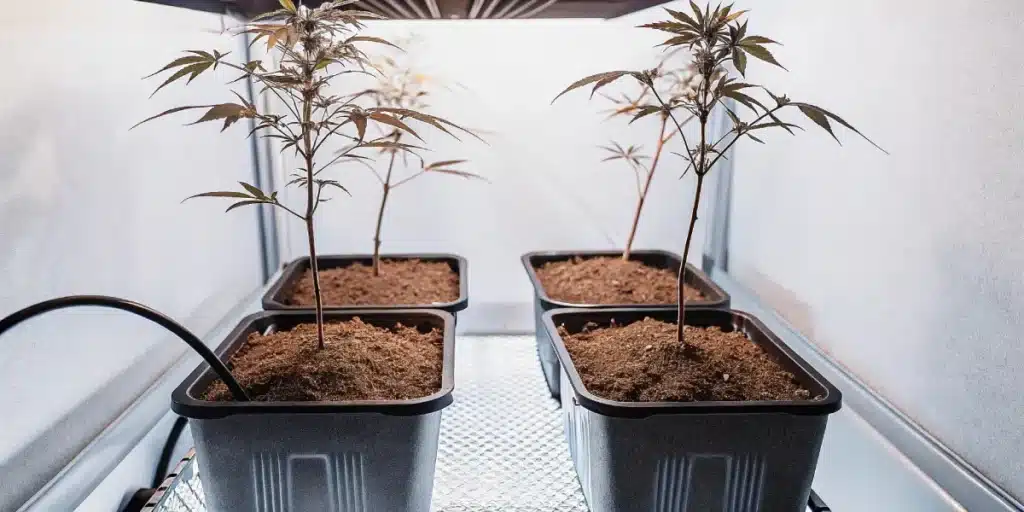
Measuring PPFD in Cloning Environments
Tools and Techniques for Accurate PPFD Measurement
Accurate PPFD measurement is essential for keeping clones in the optimal light range, and using the right tools simplifies this process. A PAR (Photosynthetically Active Radiation) meter is the go-to device for measuring PPFD. By positioning the PAR meter at the level of your clones, you can read the exact Photosynthetic Photon Flux Density reaching your plants, ensuring consistency across the cloning area. Investing in a reliable meter might seem like an added expense, but it’s a valuable tool for improving yield quality.
For growers on a budget, smartphone light meter apps can give you an approximate reading, but they’re generally less precise. If you choose this route, cross-check with other measurements and observe your clones for stress signs. Once you’ve established an effective light setup, you may only need occasional measurements to maintain conditions.
Creating a Uniform PPFD Across Your Cloning Area
Uniformity in PPFD distribution prevents uneven growth and ensures that all clones develop at the same rate. To achieve uniform PPFD, position lights to minimize shadows and overlap light coverage from multiple sources. Reflective surfaces around the grow area can help bounce light back onto clones, maximizing the PPFD without increasing energy costs.
Regularly rotating clones also ensures even exposure, preventing any clone from being under- or overexposed. This approach keeps all clones at the same growth stage, helping you maintain a synchronized grow cycle. Using light diffusers, if available, can also soften the light, providing a more even PPFD across the cloning area and reducing the risk of hotspots.
Pitfalls in PPFD Measurement and How to Avoid Them
Many growers make the mistake of setting PPFD without taking into account factors like reflective surfaces, overlapping lights, or shadows. This can lead to inconsistent light exposure, which results in uneven growth among clones. When measuring PPFD, always check multiple spots across the cloning area to get an accurate average. Shadows from equipment or the grow tent structure can reduce Photosynthetic Photon Flux Density levels in specific areas, leaving some clones underdeveloped.
To avoid these issues, place your light meter at various heights and distances within your cloning environment to identify any weak spots. Using uniform reflective materials, like mylar, across walls will further help distribute light evenly. Also, avoid setting lights too close to clones, as this can create overly intense zones, which stress clones and impede rooting. Regular measurements and adjustments will ensure balanced PPFD for all clones.
Adjusting PPFD for Environmental Conditions
Balancing PPFD with Temperature and Humidity
Light, temperature, and humidity interact closely to create the optimal environment for cannabis clones. For clones to thrive, it’s essential to maintain a balanced combination of these three factors, as high Photosynthetic Photon Flux Density levels often increase temperature, potentially drying out clones. Generally, cannabis clones prefer a humidity level of 70%-80% with a temperature range of 70°F-75°F. High humidity aids in root development, while consistent temperatures prevent clones from becoming stressed.
When working with higher levels, consider raising humidity slightly or using a humidifier to prevent drying. Likewise, increase airflow with gentle fans to keep the environment stable. Monitoring these environmental parameters will ensure clones receive the benefits of PPFD without experiencing unwanted stress.
Adjusting PPFD for High or Low Humidity Cloning Chambers
Cloning chambers with varying humidity levels require careful PPFD adjustments. In high-humidity environments, clones have better moisture retention, allowing for a slightly higher range without risking dehydration. A PPFD of 150-200 µmol/m²/s is manageable in high humidity, encouraging healthy rooting and initial growth.
In contrast, low-humidity environments can quickly dry clones under high Photosynthetic Photon Flux Density, so aim for a lower range of 100-150 µmol/m²/s in these cases. Alternatively, using a humidity dome over clones can trap moisture and help stabilize their environment, making it easier to control PPFD impact. Regularly monitoring humidity and light levels in low-humidity setups is essential for keeping clones healthy.
The Impact of Airflow on PPFD and Clone Health
Proper airflow not only prevents mold and mildew but also helps distribute heat and light evenly. When using higher levels, airflow can cool down the environment, protecting clones from the risk of overheating. Place small fans around your cloning area to circulate air gently, avoiding direct air blasts on clones to prevent dryness. Good airflow ensures that every part of the plant receives adequate PPFD without experiencing localized heat spots.
In cloning chambers, gentle ventilation maintains humidity and reduces heat buildup from lights. Maintaining consistent airflow paired with appropriate Photosynthetic Photon Flux Density helps clones adapt to their environment, keeping them strong and resilient. When balanced correctly, PPFD and airflow work in tandem to promote robust growth from the very start.
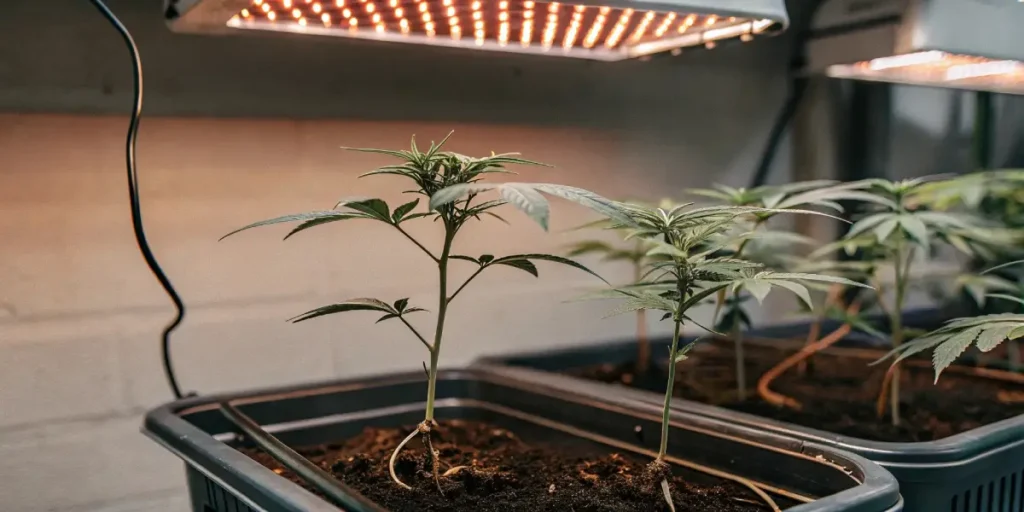
Troubleshooting PPFD Issues in Clone Cultivation
Identifying Symptoms of Low or Excessive PPFD in Clones
Clones react visibly to incorrect light levels, and recognizing these signs early can save your plants. If clone PPFD is too low, they will stretch toward the light source, resulting in thin, weak stems. On the other hand, excessive PPFD causes wilting, yellowing leaves, or even burn marks. Such symptoms indicate your clones are not receiving the right PPFD clones for healthy growth, so immediate adjustments are necessary.
For low Photosynthetic Photon Flux Density, either lower the lights or increase the intensity to reach an appropriate level. For excessive PPFD, raise the lights or lower the output to protect the clones. Tracking clone health daily will help you catch these symptoms early and optimize your lighting conditions effectively.
How to Increase or Decrease PPFD for Optimal Growth
Fine-tuning Photosynthetic Photon Flux Densityfor clones doesn’t always require changing lights. Start by adjusting the height of your light fixtures to increase or decrease PPFD effectively. For higher PPFD, gradually lower the lights, monitoring clone response carefully to avoid overstressing the plants. When reducing PPFD, either raise the lights or dim the intensity if your lights have adjustable settings.
Reflective materials also play a role in PPFD adjustments. Adding reflective surfaces increases light bounce, effectively raising PPFD without using additional energy. Alternatively, decreasing reflective surfaces or adding shade in specific areas can lower PPFD for sensitive clones. With these adjustments, you can adapt Photosynthetic Photon Flux Density to match the clone’s needs as they grow and transition into stronger plants.
PPFD Best Practices for Consistent Clone Success
Consistency is key when managing PPFD for cannabis clones. Regularly check your PPFD readings across the cloning area, making minor adjustments as needed. Ensure that all clones receive an even Photosynthetic Photon Flux Density by rotating them every few days to prevent any one plant from overexposure. As clones mature, gradually increase PPFD to support stronger growth without shocking the plants.
Investing in quality PAR meters and carefully monitoring the environment will help you create an optimized setup for clones. Staying consistent with these best practices ensures that your clones transition smoothly from rooting to the vegetative stage, establishing a foundation for successful growth.
Transitioning Clones to Higher PPFD Levels
Once clones develop strong roots, they’re ready to handle higher Photosynthetic Photon Flux Density levels. However, it’s essential to increase PPFD gradually. Sudden exposure to intense light can stress young plants, impacting their growth trajectory. Start by increasing PPFD in small increments every few days, observing each clone’s reaction to ensure they adapt comfortably.
During this transition, maintaining stable environmental factors, like temperature and humidity, is equally important. Clones experiencing stable environmental conditions alongside gradual PPFD increases are more likely to develop into robust plants ready for the vegetative phase. This careful transition will set them up for success as they grow and prepare to produce quality buds in the flowering stage.
Tracking Clone Development Through Each PPFD Adjustment
Monitoring clone health after each PPFD adjustment provides valuable feedback on how well your clones adapt to new light levels. Note physical changes, such as leaf color, stem thickness, and general vitality. Healthy clones typically show gradual, balanced growth with vibrant green leaves, a sign they’re thriving under the current level.
Keeping a record of these changes will allow you to spot patterns, fine-tune adjustments, and identify any stress signs early. With consistent monitoring and tracking, you’ll gain insights into how your clones respond to light changes, enabling you to make informed adjustments for sustained growth success.
Optimizing Environmental Conditions for Clones Under PPFD Adjustments
As you adjust Photosynthetic Photon Flux Density levels, managing environmental conditions becomes crucial. The right balance of light, temperature, and humidity creates an ideal environment that enhances the cloning process and promotes healthy growth. When clones receive the optimal PPFD levels alongside stable conditions, they are less likely to experience stress or show symptoms of environmental imbalance.
For clones in a high PPFD environment, keep temperatures between 70–75°F and humidity around 70–80% to maintain moisture in the young plants without drying them out. If you’re working with lower PPFD, adjust the humidity slightly higher to support moisture retention. Additionally, monitor airflow to prevent mold or mildew growth, which can thrive in high humidity environments.
Choosing PPFD-Friendly Grow Lights
Selecting the right grow lights plays a significant role in achieving consistent PPFD for your cannabis clones. Full-spectrum LED lights are often the preferred choice, as they offer energy efficiency and flexibility in controlling light intensity. They also produce lower heat compared to traditional lights, which helps in managing temperatures in the cloning space.
Consider lights with adjustable intensity, allowing you to fine-tune Photosynthetic Photon Flux Density levels as clones progress through their growth stages. Some growers opt for dimmable LED lights or lights with PPFD-specific settings, giving you more control over how much light each clone receives without manually adjusting light distance. This approach helps create an efficient, low-maintenance cloning environment.
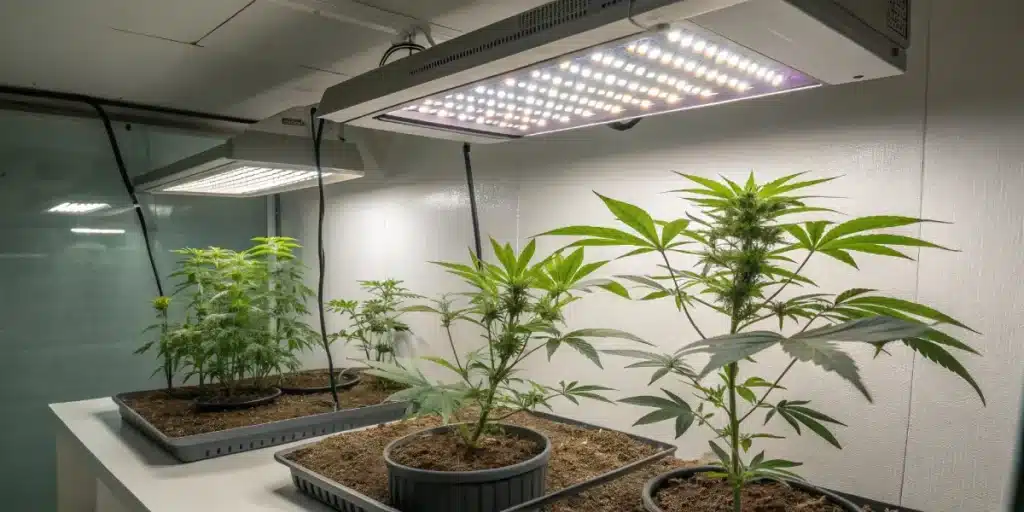
Troubleshooting PPFD Issues in Cloning
Even with careful PPFD management, you might encounter challenges. Recognizing early signs of too low or too high Photosynthetic Photon Flux Density helps you adjust before clone health declines. Clones exposed to low PPFD levels may exhibit slow growth, pale leaves, or weak stems, while clones under excessive PPFD may develop burnt edges, curled leaves, or overly thick stems.
To fix low issues, increase light intensity gradually or lower the distance between the light and clones. For high PPFD issues, raise the lights slightly or adjust them to a lower intensity setting. Make these changes incrementally, as sudden shifts can cause more stress, setting back clone development. Keeping an eye on these factors helps keep your clones thriving as they progress into the vegetative phase.
FAQs: PPFD for Clones in Cannabis Cultivation
What is the ideal PPFD for cannabis clones?
For cannabis clones, a Photosynthetic Photon Flux Density range between 100–200 µmol/m²/s is generally recommended. This lower intensity supports early root development without overwhelming the young plants, preparing them for stronger light as they progress.
How can I measure PPFD accurately in my cloning area?
You can measure PPFD using a quantum or PAR meter, which measures the light intensity that plants actually use for photosynthesis. Place the meter at canopy level to get a precise reading for the clones. Some mobile apps can offer approximations, but dedicated meters provide the most reliable measurements.
What happens if clones receive too much PPFD?
Excessive PPFD levels can stress clones, leading to issues like burnt leaf tips, curling, and a stunted growth rate. Young clones are sensitive and thrive under gentler light, so it’s essential to keep PPFD within the recommended range.
Can I use any grow light for achieving the right PPFD for clones?
Full-spectrum LEDs are often the best choice for clones due to their energy efficiency and controllable intensity. LED lights also produce less heat, which helps maintain stable temperatures in the cloning area. Dimmable or adjustable lights are ideal for dialing in specific Photosynthetic Photon Flux Density levels.
How often should I adjust PPFD as clones develop?
As clones start forming roots and transitioning to vegetative growth, you can gradually increase PPFD to around 200–400 µmol/m²/s. However, these adjustments should be incremental to prevent clone stress. Monitoring plant response will help you know when it’s time to make changes.
Does humidity affect the PPFD needs of clones?
Yes, humidity and PPFD interact closely. Higher humidity can help balance higher Photosynthetic Photon Flux Density levels by keeping moisture in the leaves. Aim for 70–80% humidity in the early stages to prevent dehydration when PPFD is in the higher range for clones.


